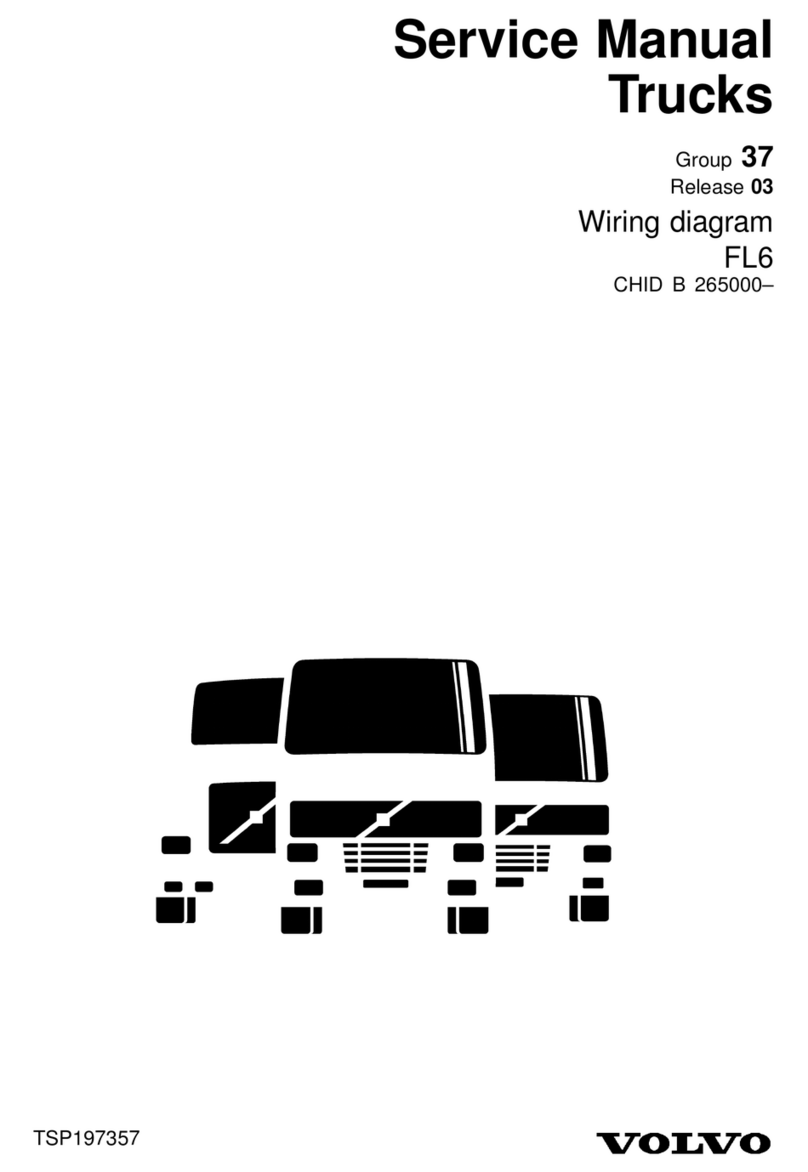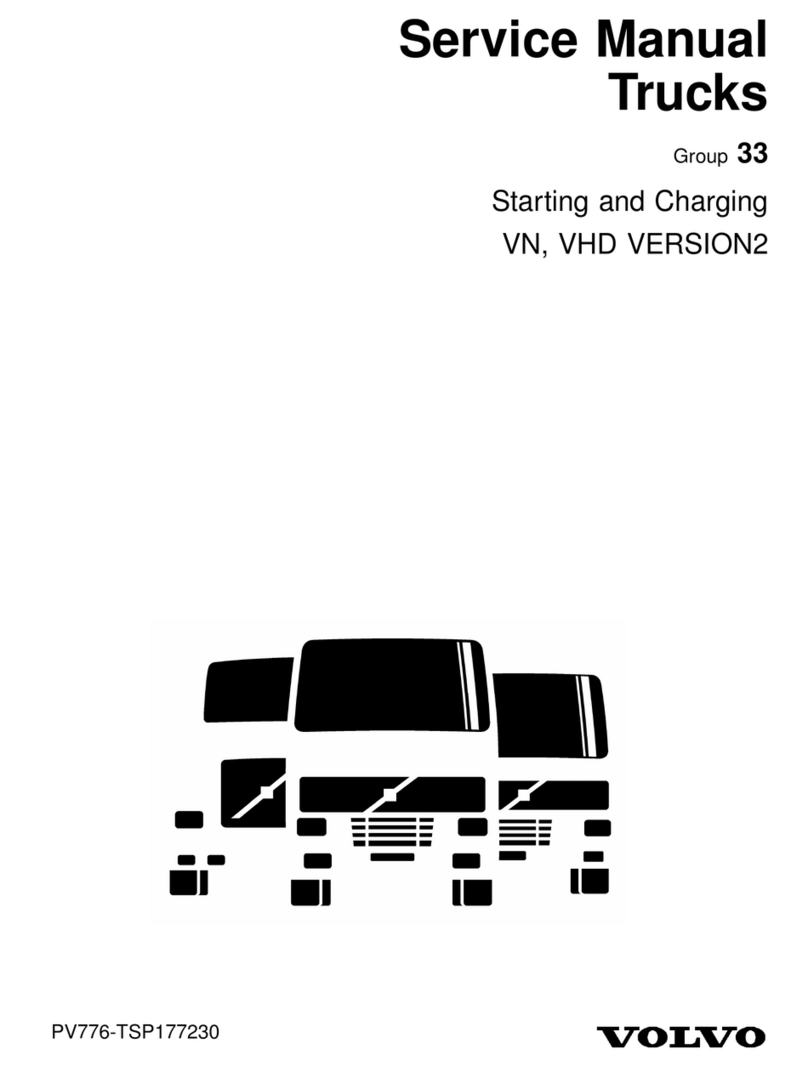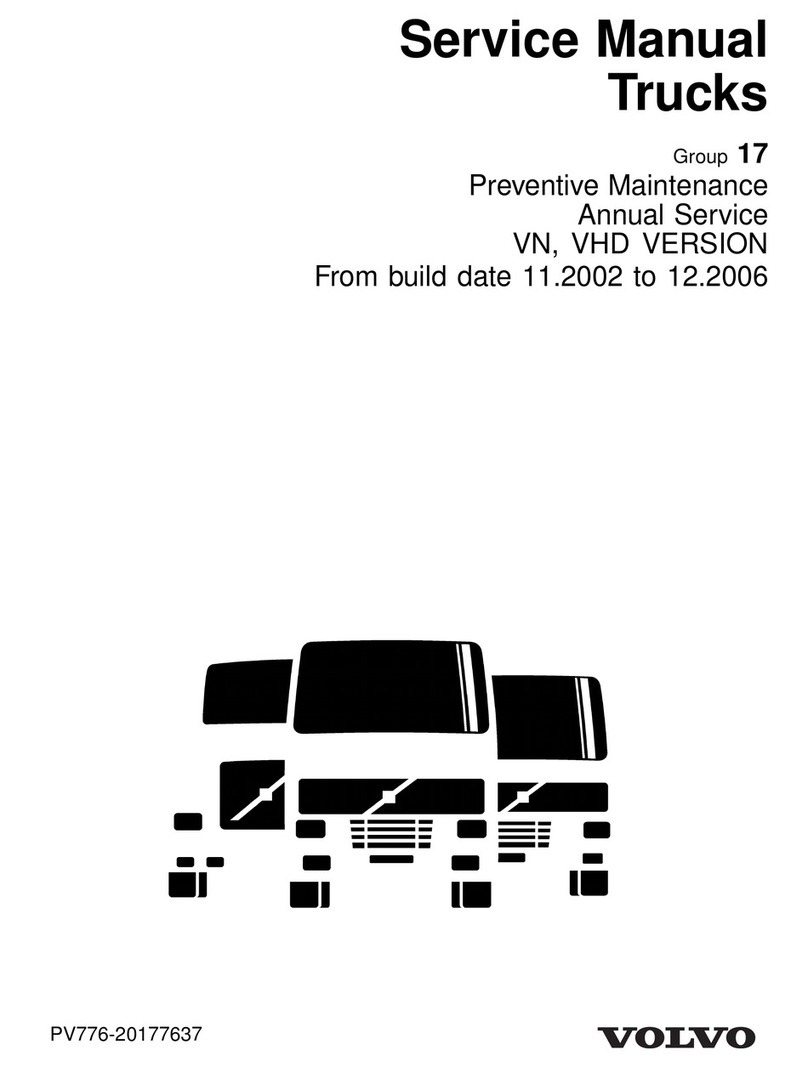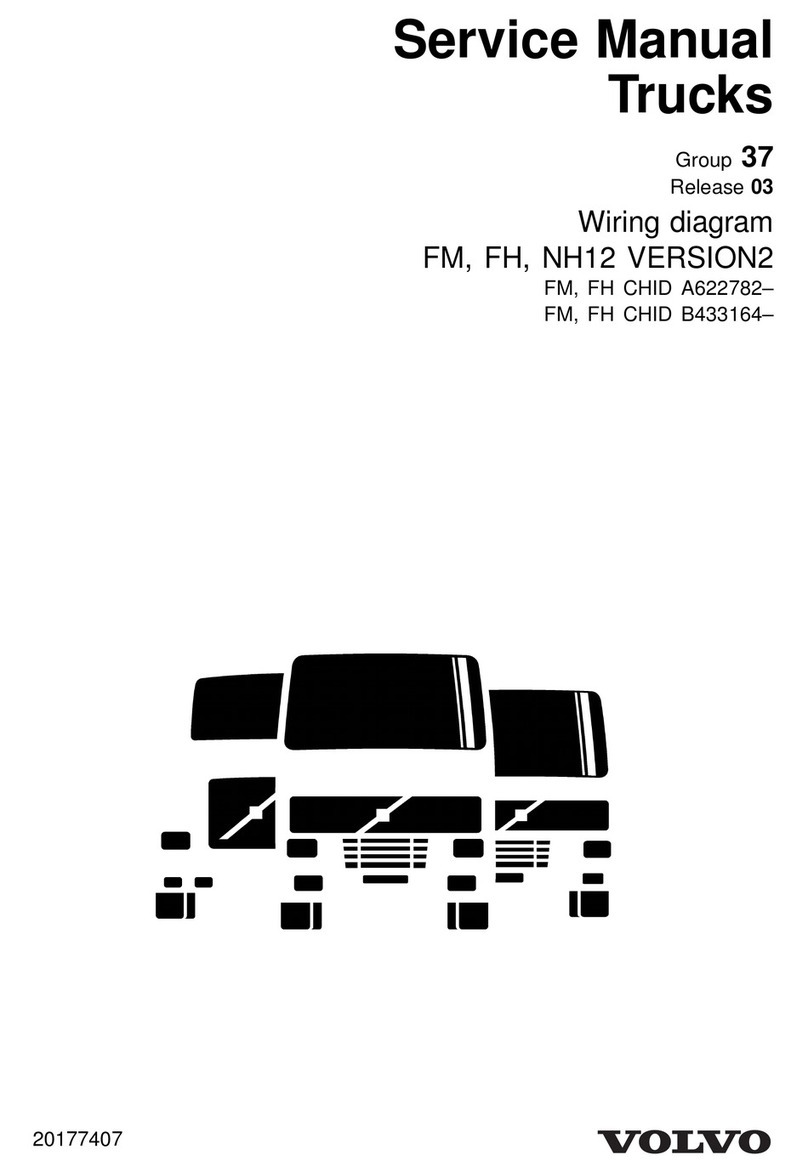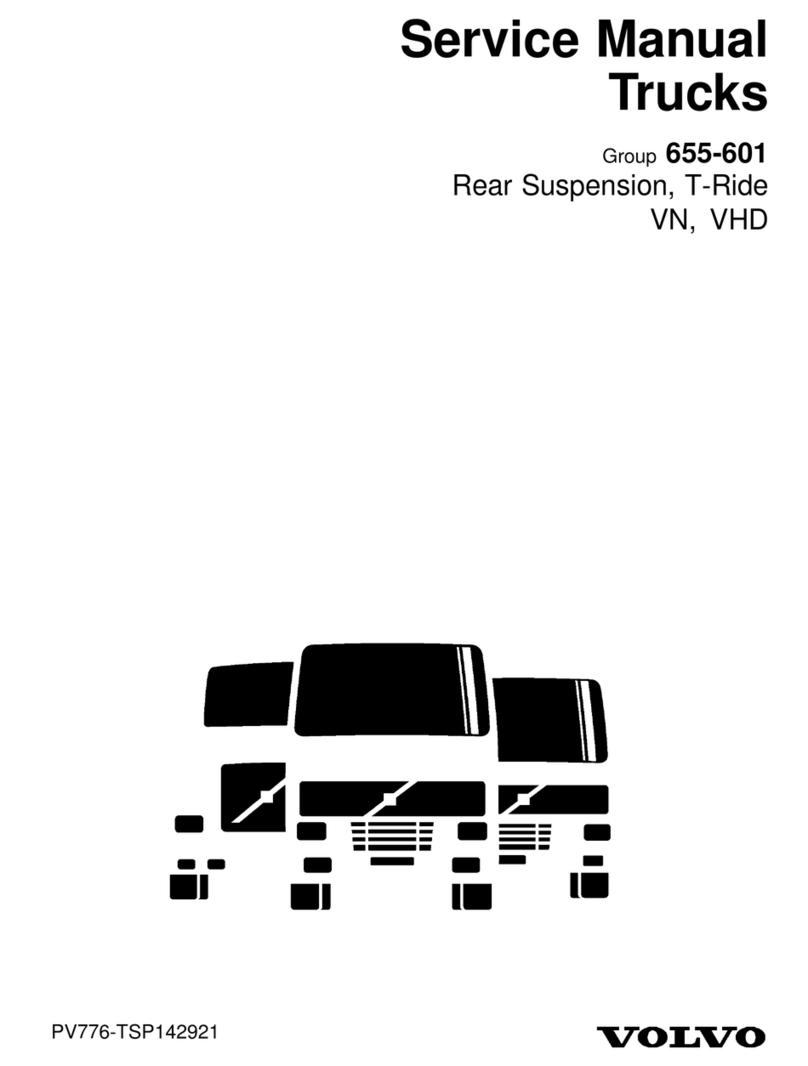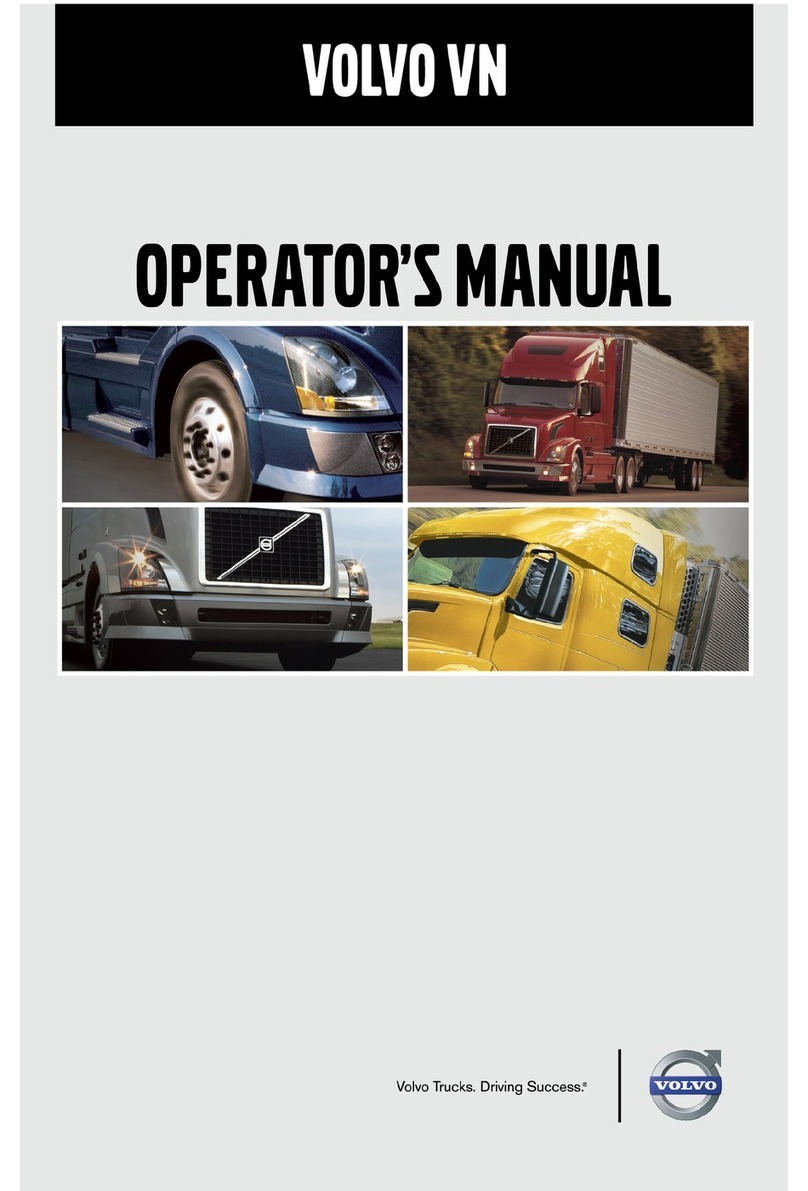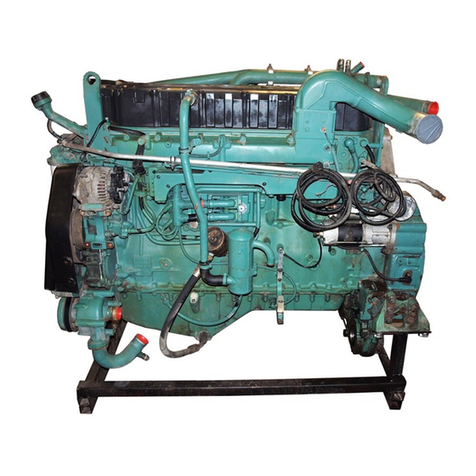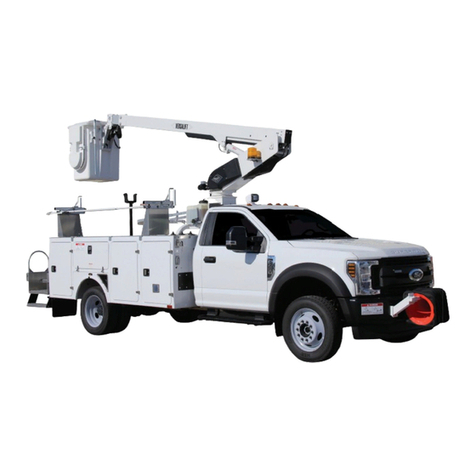
Contents
General........................................................................3
ElectricalSystem-VNL,VNM(06.96to02.98)........3
Specifications.............................................................5
ReplacementWireSizes............................................5
Tools............................................................................7
SpecialEquipment.....................................................7
DesignandFunction..................................................9
GeneralCircuitInformation........................................9
CircuitTypes............................................................11
StartingandChargingSystem.................................18
ElectricalPass-ThroughforCabWiring,Powerand
Ground.....................................................................22
SwitchesandControls.............................................23
FuseandRelayLocations.......................................29
LightingSystem........................................................35
Instrumentation.........................................................41
ServiceProcedures..................................................43
GeneralWorkPracticesandCautions....................43
Soldering/WireSplicing............................................46
BatteryCableFusibleLinkReplacement(Battery
toStarter).................................................................47
BatteryCableFusibleLinkReplacement(Ground
Cable).......................................................................48
IgnitionSwitchReplacement....................................50
IgnitionSwitchandHousingReplacement..............52
HornContactsReplacement....................................54
TurnSignal/CCSwitchReplacement......................56
WindshieldWiperSwitchReplacement...................58
Headlight/ParkingLampSwitchReplacement.........60
RoadLamp(FogLamp)SwitchReplacement........62
DimmerControl(dashillumination)Rheostat
SwitchReplacement................................................64
RearSuspensionCabUnloaderControlValve
Replacement............................................................66
LiftAxleControlValveReplacement.......................66
FifthWheelSliderValveReplacement....................66
DifferentialLockoutValveReplacement..................66
AxleLockControlValveReplacement....................66
DashAirSwitchReplacement.................................66
CigarLighterReplacement......................................68
HazardLampSwitchReplacement.........................69
AuxiliaryLightSwitchReplacement.........................69
Dash(LeftSide)SwitchReplacement.....................69
MarkerInterruptSwitchReplacement.....................70
IdleControlSwitchReplacement.............................70
HeatedMirrorSwitchReplacement.........................70
TractionControl(TCS)SwitchReplacement...........70
Dash(RightSide)SwitchReplacement..................71
RadioReplacement(DashMounted)......................72
IgnitionPowerRelayReplacement..........................74
AccessoryPowerRelayReplacement.....................76
DaytimeRunningLampControlModuleReplace-
ment.........................................................................79
CombiRelayReplacement......................................80
PowerWindowSwitchReplacement(RightorLeft)82
PowerMirrorSwitchReplacement..........................83
DigitalClock(Sleeper)Replacement.......................84
SleeperReadingLampSwitchReplacement..........86
SleeperHeaterControlSwitchReplacement..........86
SleeperControlPanelSwitchReplacement............86
WindshieldWiperMotorReplacement....................87
WindshieldWiperLinkageAssemblyReplacement88
OperationNumbers
1

